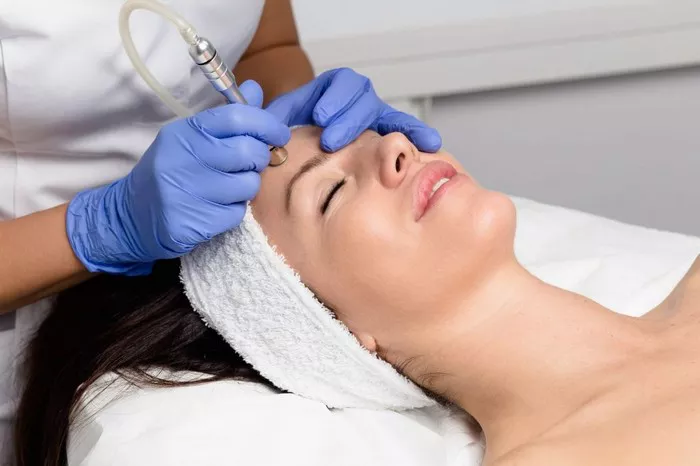Microdermabrasion and dermaplaning are two popular skincare treatments that offer various benefits for the skin. Both procedures are effective in exfoliating the skin and promoting a smoother, more youthful complexion. But can you do microdermabrasion after dermaplaning? Let’s explore these treatments and find out if combining them is a safe and beneficial option.
Understanding Dermaplaning and Microdermabrasion
Before delving into the combination of these treatments, let’s understand what dermaplaning and microdermabrasion involve.
Dermaplaning
Dermaplaning is a non-invasive procedure that uses a sterile surgical scalpel to gently scrape off the top layer of dead skin cells and fine facial hair. It helps to reveal a brighter, smoother complexion and enhances the absorption of skincare products. Dermaplaning is often performed by a trained skincare professional.
Microdermabrasion
Microdermabrasion is a mechanical exfoliation technique that involves using a handheld device to spray tiny crystals onto the skin’s surface. These crystals gently remove the outer layer of dead skin cells and stimulate collagen production. Microdermabrasion can be done at a spa, dermatologist’s office, or with at-home kits.
Can You Combine Dermaplaning and Microdermabrasion?
While both dermaplaning and microdermabrasion aim to exfoliate the skin, it is generally not recommended to combine these treatments in a single session. Here’s why:
Excessive exfoliation
Dermaplaning and microdermabrasion both involve physical exfoliation of the skin. Combining these treatments can lead to excessive exfoliation, which may cause irritation, redness, or sensitivity. It is important to give your skin time to recover between exfoliation procedures.
Increased risk of injury
Dermaplaning requires the use of a sharp scalpel, and microdermabrasion involves the application of abrasive crystals. If these treatments are performed back-to-back or simultaneously, it increases the risk of accidental injury to the skin. It is essential to prioritize your skin’s safety and avoid unnecessary risks.
Individual treatment benefits
Dermaplaning and microdermabrasion offer distinct benefits to the skin. Dermaplaning primarily focuses on removing vellus hair (peach fuzz) and dead skin cells, while microdermabrasion targets uneven skin texture, fine lines, and pigmentation issues. By combining these treatments, you might not fully reap the benefits of each procedure.
Alternatives and Complementary Treatments
Although combining dermaplaning and microdermabrasion may not be ideal, there are alternative options and complementary treatments that can enhance your skincare routine. Consider the following alternatives:
Chemical peels
Chemical peels involve applying a solution to the skin to remove dead cells and stimulate collagen production. They can address various skin concerns, such as acne, hyperpigmentation, and fine lines. Chemical peels can be customized based on your specific skin needs and desired level of exfoliation.
Facial masks and exfoliants
Incorporating facial masks and exfoliating products into your skincare routine can provide additional exfoliation and rejuvenation benefits. Look for products containing gentle chemical exfoliants like AHAs (alpha hydroxy acids) or BHAs (beta hydroxy acids) to promote cellular turnover and reveal smoother skin.
Hydrating and nourishing treatments
After exfoliation, it’s crucial to replenish the skin’s moisture and nutrients. Consider using hydrating serums, moisturizers, and facial oils to restore the skin’s balance and keep it supple and healthy.
Professional skincare consultations
If you’re unsure about which treatments are best for your skin, it’s always a good idea to consult with a skincare professional. They can assess your skin type, concerns, and goals to recommend the most suitable treatments and products for you.
Conclusion
While dermaplaning and microdermabrasion are both effective exfoliation methods, it is generally not recommended to combine these treatments in a single session. Excessive exfoliation and increased risk of injury are concerns when performing them back-to-back. Instead, consider exploring alternative options like chemical peels, facial masks, and exfoliating products to enhance your skincare routine. Prioritizing your skin’s safety and seeking professional guidance can help you achieve a healthier, glowing complexion. Remember, a well-rounded skincare routine should focus on gentle exfoliation, hydration, and nourishment to maintain optimal skin health.


